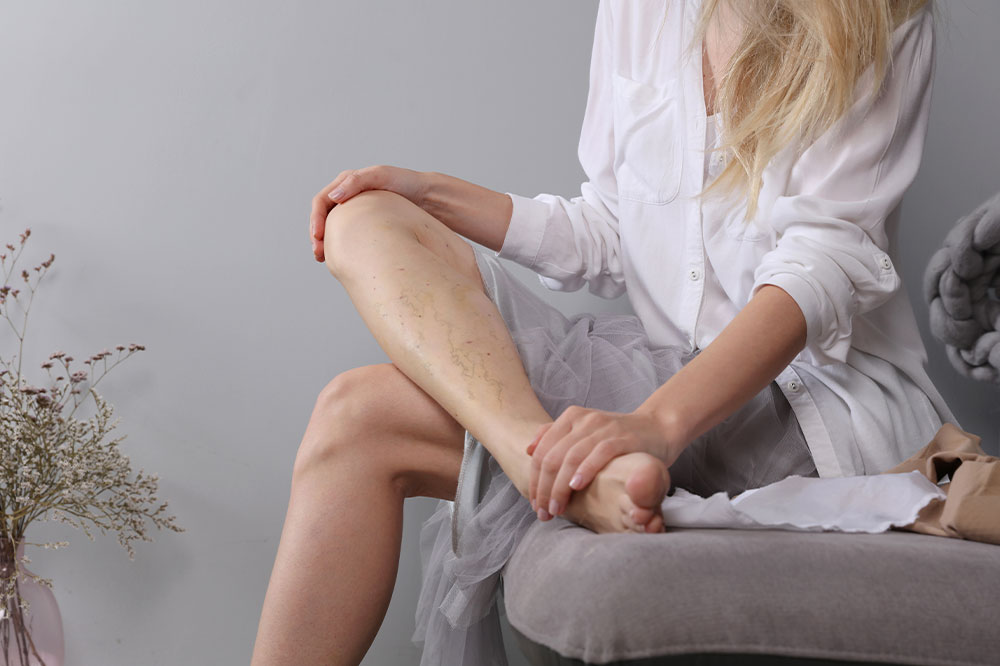
Best treatment options for varicose veins
Our veins perform the crucial function of returning deoxygenated blood from different parts and organs of the body to the heart. But damaged valves can cause the blood to flow in the wrong direction or clot, causing enlarged patches. These are commonly referred to as varicose veins in the medical community. Approximately one in four people in our country are at risk of developing varicose veins. However, the condition is treatable. Here is an overview of the best varicose veins treatment options for adults.
Common diagnostic procedures
Before dermatologists can decide on a suitable varicose veins treatment, they recommend specific tests to identify the extent of the damage. Only proper diagnosis helps determine if minimally invasive treatment is possible or surgical vein removal is the only option. Standard diagnostic procedures include:
- A physical examination to check for swelling, scarring, and progression
- Ultrasound tests to check for blood circulation and discover blood clots
Note that most invasive and noninvasive varicose veins treatments have side effects. However, the diagnosis helps determine a safer option.
Sclerotherapy
Many dermatologists recommend sclerotherapy for varicose veins treatment. The procedure is minimally invasive and is widely used for smaller damaged veins. In this procedure, a chemical fluid is injected into the veins around the affected area at multiple points. The fluid triggers a reaction that allows the walls of the veins to stick together. Additionally, dermatologists place a compression stocking to apply pressure in the injected area.
With sclerotherapy, it takes about three to four weeks for smaller spider veins to subside. Varicose veins, on the other hand, may take a couple of months. Dermatologists recommend a minimum of three doses of sclerotherapy for best results. During this varicose veins treatment, it is possible to resume daily routine and follow exercise instructions for rehabilitation and recovery.
Laser treatments
For more severe cases, dermatologists recommend combining endovenous laser therapy (EVLT) and radiofrequency ablation (RFA) to remove clogged veins. These procedures may take several hours to complete. But rest and recovery are possible at home after the surgery. Here is an overview of how these surgeries are performed:
- Endovenous laser therapy (EVLT)
Using ultrasound imaging, dermatologists guide a catheter that contains a laser heat source. The heat closes the veins, preventing blood from flowing back into the damaged portion. If multiple smaller veins appear blocked, they are surgically removed or cut off at the source, preventing any blood flow after that. EVLT is done after administering the local anesthesia so that the affected area remains numb throughout the procedure. Post therapy, a compression stocking is used to put pressure and prevent bleeding during recovery. - Radiofrequency ablation (RFA)
This is a similar procedure where doctors insert a catheter into the vein and pass an electrical current to create heat using radiofrequency energy. The current is controlled to achieve a maximum temperature of 120°C. The heat destroys the vein and seals off blood flow, thus alleviating the inflammation. However, RFA varicose veins treatment is unsuitable for larger veins as the procedure relies on direct contact between the walls and the catheter. It is only effective on smaller veins that branch out from the main line. Also, in comparison to EVLT, radiofrequency ablation can result in skin burns, nerve damage, or even deep vein blood clotting. Hence, it must be used with caution.
Vein surgery
Surgery is the last resort for patients who cannot benefit from sclerotherapy or laser treatments. Dermatologists perform a vein stripping procedure where all the varicose veins are tied off from the main leg vein and surgically removed. The removal of these veins does not affect the natural blood flow as deeper veins within the leg compensate for the circulation.
Vein stripping may be considered if patients experience persistent pain, bleeding, develop blood clots, or ulcers and skin sores. Usually, doctors do not recommend this varicose veins treatment for pregnant women, patients who are obese, people with blood circulation disorders, or even those who suffer from skin infections that affect the legs.
Home remedies and lifestyle changes
Home remedies can help manage the swelling, reduce any burning or throbbing sensation in the legs, and alleviate muscle cramps. Dermatologists suggest exercises to improve blood circulation and unclog the veins. Simple yoga, walking, swimming, or cycling can achieve this result. One can also buy compression stockings from the local pharmacy to put pressure on the legs.
Changes in diet to eliminate salt and excess fats also reduces the risk of blocked veins. Additionally, wearing loose-fitting clothing prevents blood circulation from being cut off. Women should avoid wearing heels and switch to flat slippers. If the swelling is persistent, keeping the legs in an elevated resting position allows the blood to flow smoothly. Gently massaging the swollen areas can also relieve the pressure. In general, men and women must avoid leading a very sedentary lifestyle to reduce the risk of varicose veins.




